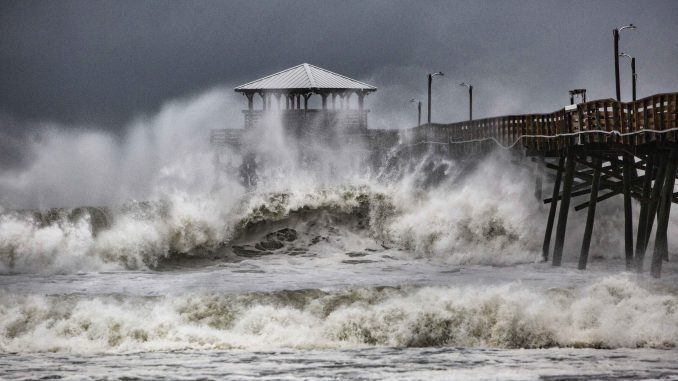
WASHINGTON — In September of 2018, Hurricane Florence made history as it came ashore in Wilmington, cutting off the port city for weeks and leading to frustration, food lines and fear. But the damage from the historic storm went beyond the well-known city of Wilmington, hitting small towns across the eastern part of the state.
Now, more than two months later, Gov. Roy Cooper visited one of those towns on Dec. 13 and was met by an angry crowd who said that the state and FEMA seemed to have forgotten about them once the television crews were gone after the storm.
“It’s good the governor is here in the Whitestocking community in Pender County,” Pender County NAACP President Dante Murphy told WWAY-TV. “But at the end of the day, a whole lot of romance without finance. I just don’t get it.”
Cooper reportedly tried to reassure the crowd that help was still on the way, but for some who’ve been homeless since the storm, promises aren’t opening the doors.
Danielle Rees of Washington, said floodwaters rose about 15 inches into her home when Florence drenched the tidewater city on the Pamlico River and overwhelmed a local creek and marshland. The first floor was a sopping mess of gritty, swampy water in three bedrooms, a bathroom and a laundry room.
“It’s part of living close to the river, and Washington is really low land,” said Rees, a graphic designer who grew up in the city.
But she anticipates her $2,000-a-year policy through the taxpayer-subsidized National Flood Insurance Program will help her rebuild the home about a quarter-mile from the river, just as it did in 2011 after Hurricane Irene — and as it did, under previous ownership, after floods in 1996, 1998 and 1999, according to her property history provided by the Federal Emergency Management Agency. The program has done something similar, over and over, for others.
Records at FEMA, which operates the program, show that nearly 37,000 properties from the Carolinas to California have repeatedly flooded and been rebuilt — some dozens of times — with help from a federal insurance program that is, itself, financially underwater. About 18,000 of those are currently covered by policies, and 15,000 of those haven’t taken voluntary steps to reduce the risk of future damage to their property, FEMA said recently.
The National Flood Insurance Program was $20 billion in the red before the start of the current hurricane season, even after Congress last year wrote off an additional $16 billion. The program must be reauthorized by Congress this month.
The repeatedly flooded properties cost nearly $7.4 billion in claims before the start of the current hurricane season.
Rees’ home isn’t included on the official “severe repetitive loss” list because the 1996 and 1998 hurricanes didn’t cause damage exceeding $5,000. It takes at least four of those $5,000-plus occurrences to put properties on the list.
With more than 5 million policies, the nation’s main source of flood insurance generated $4.3 billion in annual premiums in 2016 and paid claims of at least $3.7 billion, the Congressional Budget Office reported last year. The median cost of a year of residential coverage was $520 that year.
With more than 3.8 million households altogether, N.C. has only about 134,000 flood insurance policies. The state has 1,132 structures from Carolina Beach to Charlotte on the “severe repetitive loss” list.
Eighty-two percent of the flooded properties that have been bailed out repeatedly are single-family homes. Those homes were worth an average of $115,000 but have incurred $150,000 in damage claims, he said.
“Many people that find themselves in a situation of living in a repeatedly flooded house would like nothing more than to never file another flood insurance damage claim ever again. But the only assistance that’s readily available to them after a flood is to rebuild if they have flood insurance. So, they’re kind of trapped,” said Rob Moore, water and climate director at the Natural Resources Defense Council.
The Associated Press contributed to this report.



